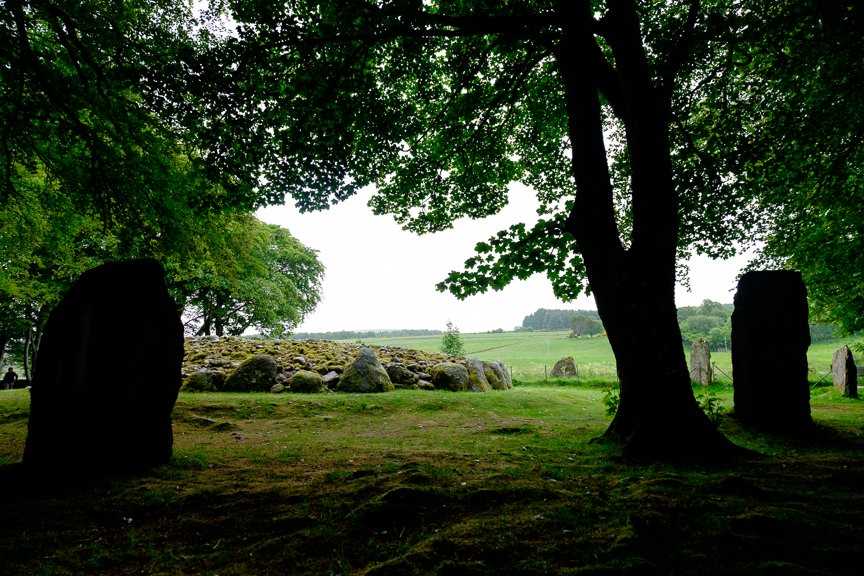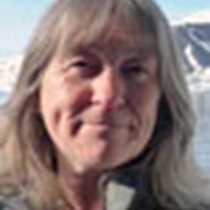Our first full day on board Lord of the Glens was packed with vivid impressions of Scotland. Straight after breakfast we were off to the historic site of the Battle of Culloden, where Jacobite ambition to restore the long-vanquished Stuart dynasty to the British throne came to its final, desperate end on April 16, 1746. A superb interpretation centre told the story of the conflict and its traumatic aftermath, including an alarmingly realistic immersive experience of the heat of the battle. Re-enactors in 18th century costume showed us how the weapons were used and what the women’s lives were like at the time. Then we strolled around the moor of Culloden, fringed with wild flower meadows, the position of the Government lines shown by red flags, those of the Jacobites by blue flags, indicating the vast scale of the battle.
A short journey then took us to the Clava Cairns, a group of Early Bronze passage graves, standing stones, and ring cairn dating from about 2000 - 1500 B.C., all aligned to the midwinter solstice sunset. Today these extraordinary monuments are set within an atmospheric wooded glade, but were once part of a much larger ritual landscape, where ancestors of these early farming communities were honoured. Detailed study has shown that many subtleties of design, petrology, colour, and texture are built into the structures.
We rejoined the ship at Dochgarroch and soon we found ourselves sailing into the legendary waters of Loch Ness. Twenty-three miles long and more than 1000 feet deep–deeper than the North Sea–it represents the largest body of fresh water in Scotland. However, its best-known resident, Nessie the Loch Ness Monster, proved elusive as ever. More substantial were the ruins of Urquhart Castle, one of Scotland’s great medieval castles, standing guard on a dramatic rock on the shores of Loch Ness as we passed by. The present walls date from 1230 until 1691 when the castle was finally destroyed to prevent it from falling into Jacobite hands. As we continued on our way Krista treated us to an “Introduction to Digital Photography.”
Fort Augustus is a charming canal-side village at the southern end of Loch Ness. While Lord of the Glens made her stately ascent of the locks up to our overnight berth, some of us went on a rural hike with Robin and Carol. The surrounding countryside was gorgeous in all its shades of green, from the luxuriant mosses, brackens, grasses and orchids, to great venerable oaks. Others of us experienced the Great Glen from the water, enjoying a paddle in kayaks along the canal. A full and busy day was rounded off after dinner with live music from a local Scottish traditional band.









